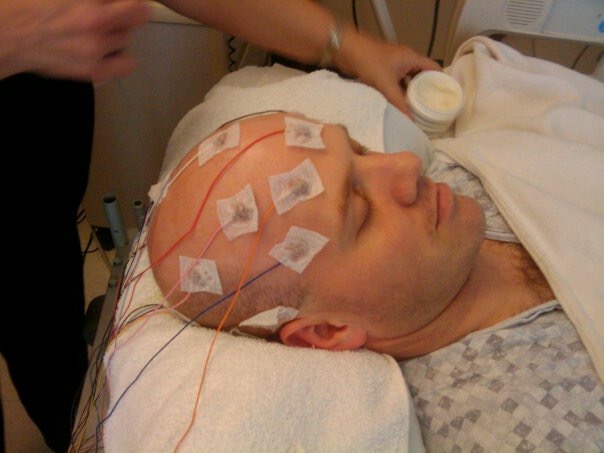We all have experienced moments where confusion and fear can threaten our survival. If you’ll bear with me, I have a personal story that illustrates this point.
Several years ago, my wife and I were shopping for carpet. As we were talking with the salesperson, I noticed my foot had fallen asleep. This was strange, because I was standing at the time and there was nothing cutting off the circulation to my foot. I tapped it on the floor to get the blood flowing again. A moment later, I noticed my calf was numb as well. I mentioned this to my wife, but was more curious than alarmed. As we continued talking with the carpet salesperson, the numbness progressed to my thigh. I told my wife I was concerned and we decided I would call the doctor’s office. By the time I talked with the medical staff, my entire right leg was numb up to my hip. The nurse recommended I go directly to an emergency room to be admitted and examined by doctors.
Luckily a hospital was nearby, but before we arrived in the parking lot, the entire right side of my body was numb. All the way to the top of my head. It was as if someone had drawn a line right down the middle of my body. The right half was numb, the left half was not. As we pulled up to the E.R., I noticed an open parking spot near the front. I began mentioning it to my wife, but all that came out my mouth were garbled sounds. A shock of fear ran through me as I realized I was probably experiencing a stroke.

A photo of me while staff perform an Electroencephalography (EEG) test to analyze brain activity.
The following sequence of events were a blur, as the emergency room staff triaged me and asked simple questions I had great difficulty answering. According to my wife, I gave the wrong date for my birthday. The doctor placed me in a private room and ordered some tests be run. X-rays, MRI, EKG, and EEG tests were all taken. Soon, I was overcome with a blinding headache and couldn’t even walk without assistance. The pain was so severe, they put me on a morphine drip. I continued asking for pain killers as I still writhed in agony. At this point, the medical staff admitted to my wife they believed I had suffered a mini stroke. They would need to keep me under observation and assess if there was any damage to my brain.
In the middle of the night, I awoke to discover all my symptoms were gone. I was able to think and walk just fine. I was no longer in pain, but I felt foggy-headed like my brain was fatigued. A neurologist visited me the next morning and explained what I had experienced was called a confusional migraine. They are rare, especially in adults, but they can present like a stroke. Thankfully, I had no damage to my brain and I would be fine. But this event was the scariest moment of my life. In the moment, I didn’t understand what was happening to my body. The cognitive disruption of the migraine added to my confusion and elevated my fear. Honestly, I wasn’t sure I was going to survive this incident.
For an example of the effects of a confusional migraine, here is a video of reporter Serene Branson exhibiting the same symptoms on air. Branson also was suffering from a confusional migraine.
You may not suffer from migraines, let alone the severe type that cause these cognitive issues. But, you have experienced confusion and fear. The moment at the mall when you couldn’t locate your young child. When you lost your footing and fell. When you were told a close relative had died suddenly. Confusion and fear combine to create a devastating cocktail that can stop you in your tracks.
Absence of Vision and Trust
What makes us think confusion and fear aren’t as potent in the workplace? Without clarity and an appropriate sense of security (physical and psychological), the workplace can be just as debilitating. We call these “toxic” environments. This emphasizes the importance of leadership intentionally creating a clear understanding of where the team is headed, and why. It reinforces the need to operate in a way that builds a culture of trust.
Often, severe migraines are precipitated by a form of impaired vision. This occurs before any pain is felt. The same can occur in the workplace. The vision becomes blurry. People lose focus. Leadership doesn’t provide the necessary clarity and this is followed by pain. Disillusionment sets in, infighting occurs and employees disengage and become disgruntled.
Patients suffering from cognitive issues may become so confused they do not trust doctors or other authorities attempting to help them. This elevates fear and escalates the situation. No matter what the doctor says, the patient may not trust they are telling the truth and can resist proper treatment. Similarly, in environments of confusion, employees can easily lose trust in leadership. Without a baseline of trust, any other issues the organization faces are even more complicated. This makes it even more important for leaders to demonstrate their commitment to employees and their best interest, not simply talk about it.
The Bottom Line
Leaders need to be intentional about avoiding confusion through clear communication and demonstration of the company’s direction and purpose. They also must mitigate fear by earning and establishing a culture of trust. Not every scenario ends like my medical scare. Confusion and fear can cause damage and threaten the survival of careers and companies alike.
